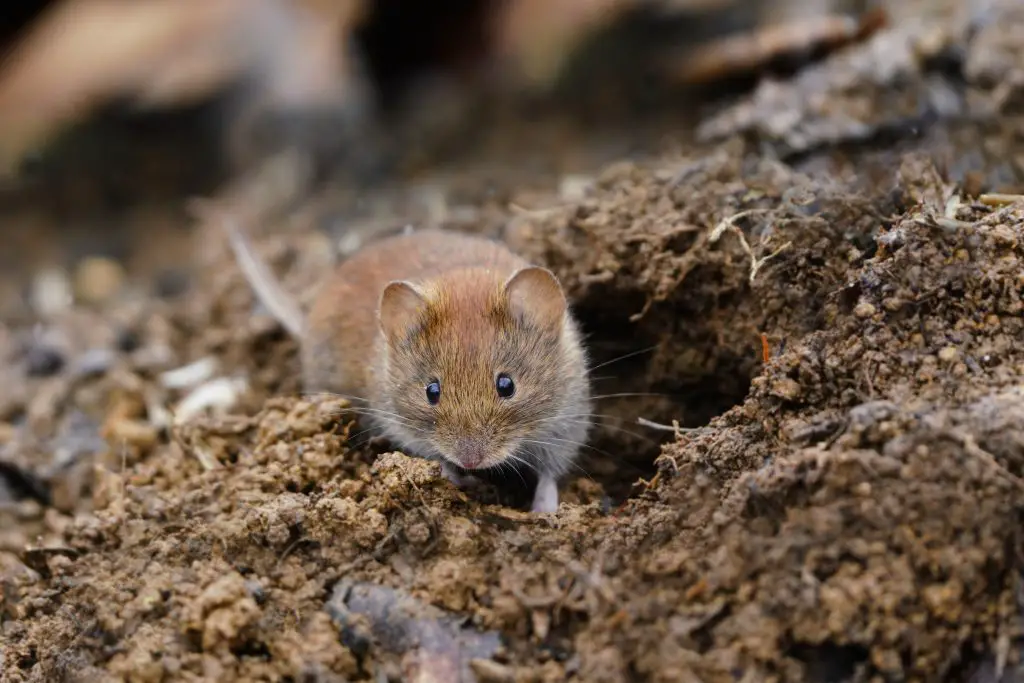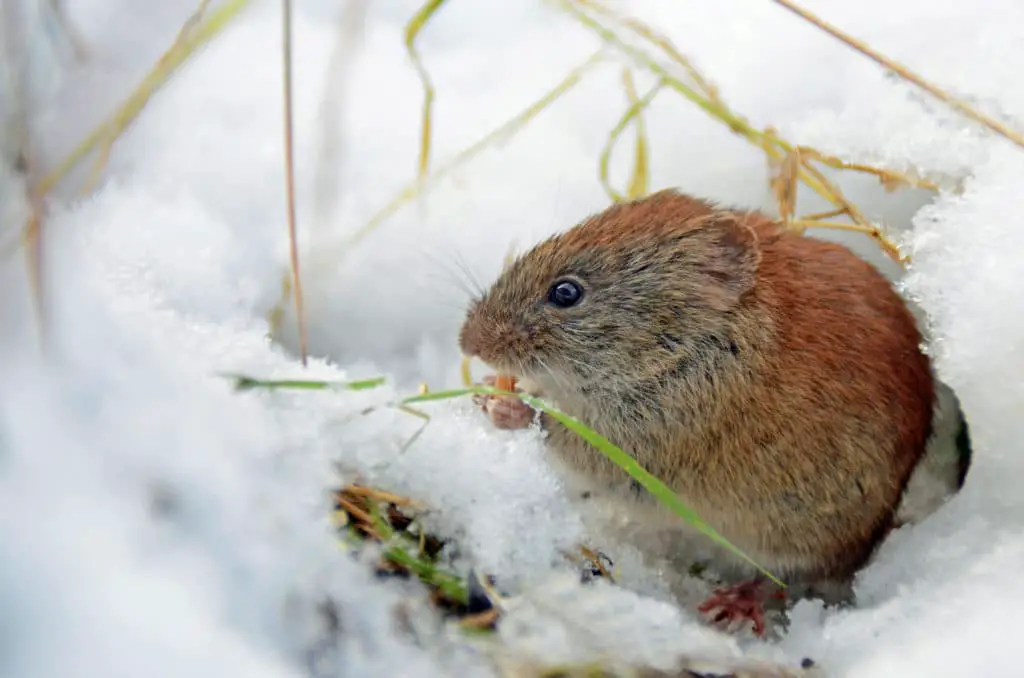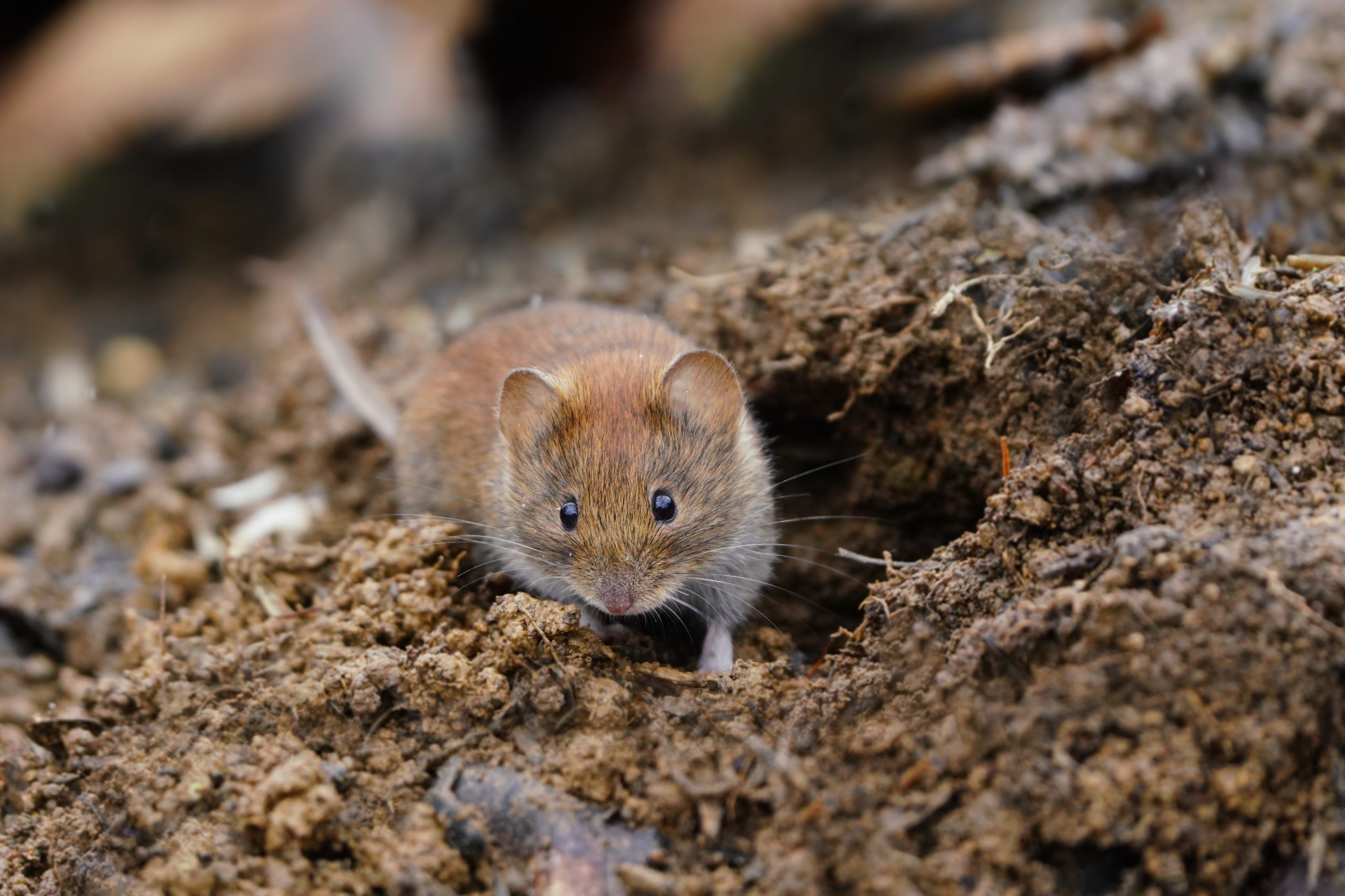Prairie voles are some of the most destructive pests in American lawns. Here’s how to get rid of voles once and for all.
Table of Contents
Vole Identification
Voles are small rodents that closely resemble mice. They are no more than 5 inches long and possess small ears, a stubby tail, and thick grey fur.
Unlike other rodents including moles, meadow mice, and field mice, voles:
- Create crisscrossing tunnels
- Cause patches of trampled grass
- Eat plant roots


Vole Damage To Lawns
When it comes to voles, just a few individual animals can wreak havoc on your property. Severe vole infestations can lead to the loss of garden plants and fruit trees, as well as create dead grass around the home.
- Voles eat and destroy grass seed, tree bark, and birdseed around the lawn.
- Vole runways (tunnels) cause dead grass and sunken-in digging tunnels.
- Voles do not hibernate, continuing to destroy your lawn long before the winter snow melts.
There are ways to restore your lawn after a vole infestation. However, keep in mind that it may take months or years to see real progress.
How To Get Rid Of Voles
There are three types of methods used to deter voles naturally: the live trap, kill methods, and deterrence through prevention.
Live vole traps catch voles in a humane, nonlethal method. It involves placing traps above vole burrows, which lure vole populations out using bait. Live traps, mouse traps, and other small-rodent traps are best used against voles. If possible, bait traps with peanut butter, fallen fruit, or nuts and seeds. Once caught, you can relocate voles to wild spaces away from your home.
Bear in mind that trapping voles does not come without its dangers. A heavy vole population may not adapt well to live traps, and eventually learn to avoid peanut butter traps around burrow entrances. Vole traps are best used in tandem with regular pest prevention.
Kill methods don’t just discourage voles, but they remove entire vectors for good. Dead voles should be removed from your property as soon as possible, and should not be handled without protective gear.
However, choosing to kill voles may not eliminate large vole populations. In fact, your vole population can quickly bounce back within a few weeks, and unless there are other control methods in place, will continue to breed for months to come. Vole bait is perhaps the most widely used kill method, but bear in mind that some vole species learn to avoid certain scents and colors.
Vole prevention is one of the best methods of infestation elimination. Not only does it control vole numbers before they run out of control, but it can be easily applied to any property using DIY vole repellents – I recommend Vole Scram.
How To Prevent Voles
The art of vole eradication begins with prevention.
- Use a vole repellant like castor oil or VoleX as an initial line of defense.
- Protect young trees by installing 1/4 inch mesh nets around their bases.
- Remove the vegetation voles can access by keeping the lawn mowed.
- Only sow grass seed during the fall months.
- Eliminate active vole food sources by allowing natural predators to thrive (cats, hawks, owls, etc)
Vole infestations leave behind a trail of damage wherever they roam. Protect yourself from their destruction with the above prevention steps.
Voles FAQs
What is a home remedy to get rid of voles?
Apart from the multitude of over-the-counter products like VoleX and Vole Scram, there are a few DIY remedies you could make at home. Mix spicy peppers, dish soap, and water into a bottle, then spray vole hotspots and affected landscaping. Another excellent technique is the use of castor oil on plants and vulnerable greenery. Both of these mixtures deter voles from chewing through your garden and help to remove them from the yard.
Do coffee grounds repel voles?
Although it is a debated subject, coffee grounds do appear to repel voles in the lawn. Sprinkle some around vole holes in the lawn, and watch for any results.
What attracts voles to your yard?
Like many other lawn pests, voles prefer lawns with plenty of stagnant water puddles, thick vegetation, and untrimmed grass. This provides the pest with food, water, and shelter; everything they need to reproduce.
What do voles hate?
A few things for cole control. Vole species hate highly manicured lawns, as well as gardens reliant on vole prevention. Physical barriers, including fences and walls, are also heavily disliked.
How do I control voles in the lawn?
Use a combination of over-the-counter products, home remedies, and cultural controls to counter a burgeoning vole problem. If the situation is serious enough, consider augmenting your approach with professional pest control efforts.

